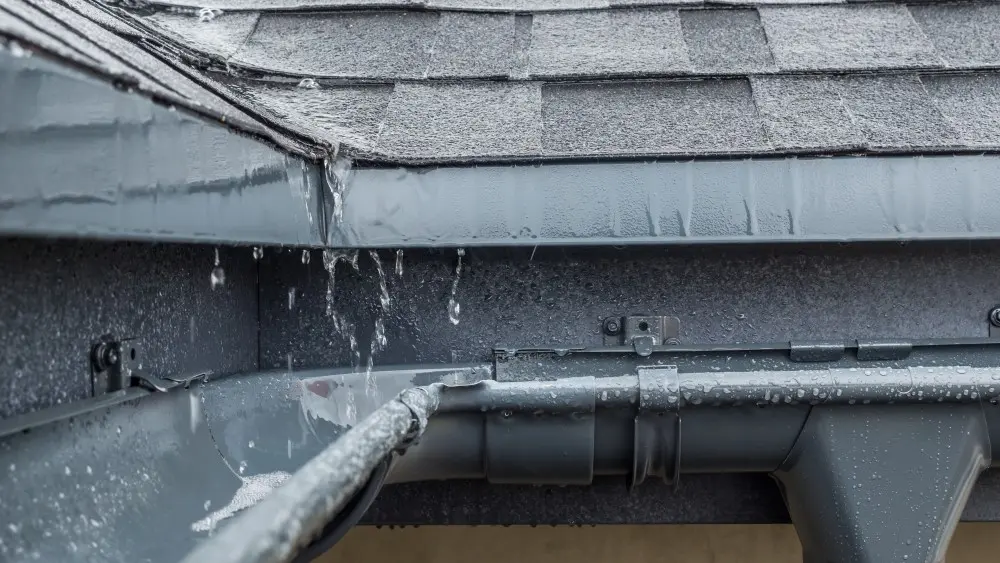Postponing roofing problems can lead to larger issues
If you’re among the 65.8% of Americans owning a home, you’ve probably had your share of maintenance issues. While it may be tempting to wait on dealing with those issues, don’t postpone a roofing problem. After all, your roof is a critical part of keeping your home safe and insulated.
Keep reading to learn about 7 roofing problems and what you should do about them!
1. Leaking Roof
A leaking roof is one of the more common issues homeowners face. Water spots on an attic ceiling usually are an indication that water is working its way beneath the shingles. You may also notice leaks around a skylight or vent.
A leaking roof can trigger a host of problems with your electrical system if you don’t take care of it. And it can damage the structural integrity of your home if water hits any of the wooden components.
Your best bet is to call a professional roofer since they will know how to track down the source of the leak. The problem could be anything from damaged flashing to an aging roof.
2. Missing Shingles
When you look up, do you notice some bare spots where shingles are missing from your roof? If so, you’ll need to pursue roof repair. Missing shingles might not indicate that you need a completely new roof, but they do indicate that your roof is more vulnerable.
Shingles provide an initial barrier against rainwater. Even though there’s a watertight membrane beneath the shingles, it can wear down over time if it’s not protected. That means leaks are likely.
Shingles reflect UV rays, too, so you might end up with higher utility bills if you’re missing a lot of them. And, of course, a roof that’s missing shingles won’t look as appealing. If you’re hoping to sell your home any time soon, it’s worth getting a roof inspection and repair.
3. Pest Issues
You never want to see critters hanging out on your roof. Raccoons, rats, and birds can wreak havoc on the structure of your roof. But if you have too many tree branches or other vegetation nearby, you’ll make your roof a magnet for pests.
You can stop pest problems by taking some initial steps. Start by trimming back overgrowth so it’s not touching your roof shingles. You’ll avoid giving pests easy access and avoid getting contaminants on your roof.
Commit to getting your gutters cleaned each year, too. When they start to fill up with leaves and debris, birds will start visiting your gutters and roof more often. And when you keep your roof in good repair, you’ll reduce the likelihood that pests will find their way into your home through a chimey.
4. Bad Flashing
Flashing is the metal material that seals the spaces where your roof meets a chimney, sidewall, or vent. Flashing is critical because it keeps water from leaking into your home. But flashing can fail due to age or poor installation.
Reputable roofing companies will use metal step-flashing at chimneys and take the time to do it right. They will not use cement or caulk since those materials cannot provide a reliable seal. And they won’t forget to add kick-off flashing.
If you see signs of water around your chimney or vents, it’s time to call the pros. A professional roofing company needs to step in and redo the installation.
5. Damaged Gutters
When your gutters aren’t functioning properly, water won’t be able to leave your roof. Gutters are instrumental in helping water safely drain from your roof. But if those gutters are cracked or full, they won’t do their job.
You’ll end up with pooling water, ice dams, and other problems that will increase the chances of roof leaks and siding rot. Look into cleaning your gutters or adding a gutter guard to reduce problems.
A good roofing repair company will be able to alert you to the need for new gutters. They may even be able to clean gutters or point you toward someone who will.
6. Cracked Roof Vents
Roofs should have vents for air circulation, but sometimes those vents end up cracking. When a crack or busted seam appears on a roof vent, it’s an invitation for water leaks.
In a similar vein, a lack of venting in your roof can lead to moisture issues. When hot air builds up in your attic, the internal temperatures will skyrocket. And as a result, you might see damage to sheathing or rafters.
Worse yet, the build-up of moisture can lead to rotting wood on the structures that should support your home. This leads to a sagging roof and more mold spores in the air. Plan on contacting a professional roofer to install vents on ridges, gables, or other appropriate parts of your roof.
7. Hail Damage
If you live in an area prone to severe weather, there’s a good chance you’ll get some hail during the summer months. Roofing repair in Tennessee or other southern states comes with the territory!
While it might appear that your roof weathered a storm just fine, it’s worth getting a roofer to look more closely. Many roofers will provide a free assessment of hail damage, and you may be able to file an insurance claim to cover most of the roof replacement.
Hail knocks the granules off the surface of your shingles. Since granules help protect your home from the sun’s heat, you won’t want bare shingles on your home. Plus granules provide color and enhance the look of your roof.
Fix Your Roofing Problems
When you know how to address roofing problems, you can prevent leaks and further damage. Look for interior water damage that may suggest roof leaks or issues with your flashing. Get your roof inspected after hail storms, and repair missing shingles or damaged gutters promptly.
Need help addressing a roofing problem? Contact us and we can help!










.avif)